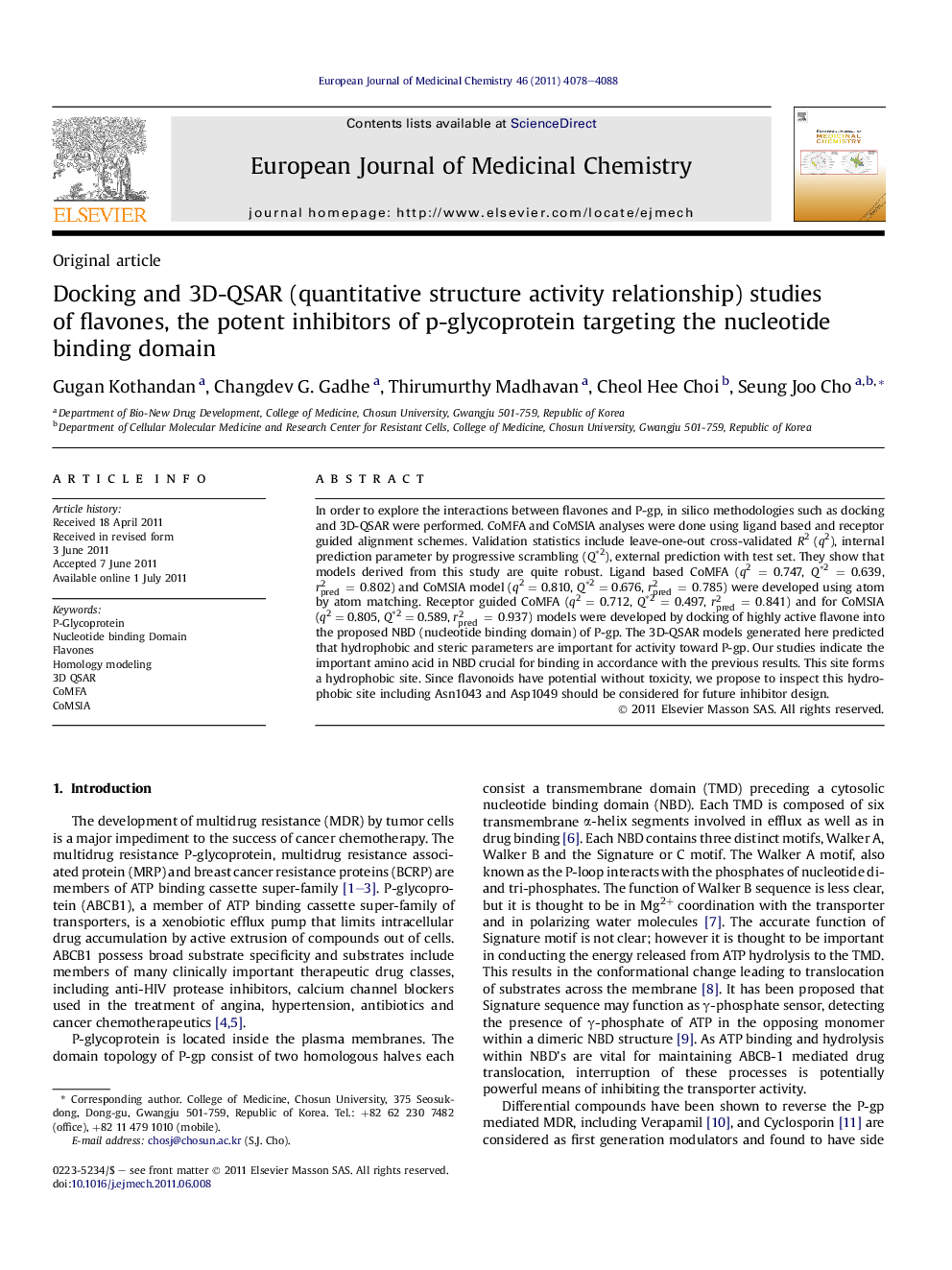| Article ID | Journal | Published Year | Pages | File Type |
|---|---|---|---|---|
| 1396169 | European Journal of Medicinal Chemistry | 2011 | 11 Pages |
In order to explore the interactions between flavones and P-gp, in silico methodologies such as docking and 3D-QSAR were performed. CoMFA and CoMSIA analyses were done using ligand based and receptor guided alignment schemes. Validation statistics include leave-one-out cross-validated R2 (q2), internal prediction parameter by progressive scrambling (Q∗2), external prediction with test set. They show that models derived from this study are quite robust. Ligand based CoMFA (q2 = 0.747, Q∗2 = 0.639, rpred2=0.802) and CoMSIA model (q2 = 0.810, Q∗2 = 0.676, rpred2=0.785) were developed using atom by atom matching. Receptor guided CoMFA (q2 = 0.712, Q∗2 = 0.497, rpred2=0.841) and for CoMSIA (q2 = 0.805, Q∗2 = 0.589, rpred2=0.937) models were developed by docking of highly active flavone into the proposed NBD (nucleotide binding domain) of P-gp. The 3D-QSAR models generated here predicted that hydrophobic and steric parameters are important for activity toward P-gp. Our studies indicate the important amino acid in NBD crucial for binding in accordance with the previous results. This site forms a hydrophobic site. Since flavonoids have potential without toxicity, we propose to inspect this hydrophobic site including Asn1043 and Asp1049 should be considered for future inhibitor design.
Graphical abstractFigure optionsDownload full-size imageDownload as PowerPoint slideHighlights► Comparative modeling of Human P-glycoprotein (Nucleotide binding domain) ► Molecular Docking of highly active flavone into the binding site ► Insights into the binding site of Nucleotide binding Domain ► Satisfactory models were obtained using CoMFA and CoMSIA using ligand based and receptor guided alignment schemes ► Crucial residues in the binding site were identified.
